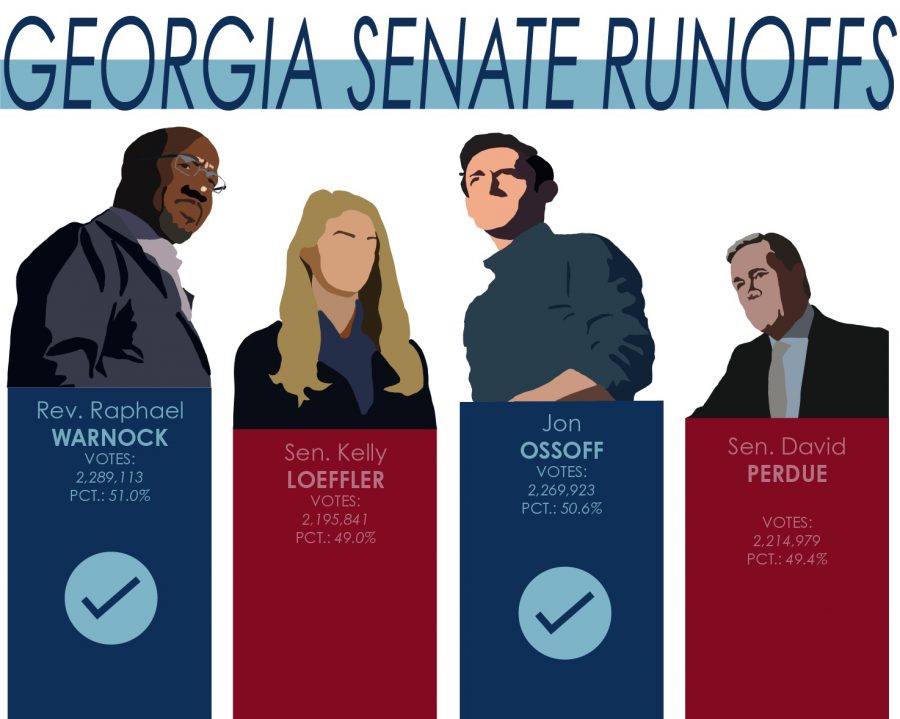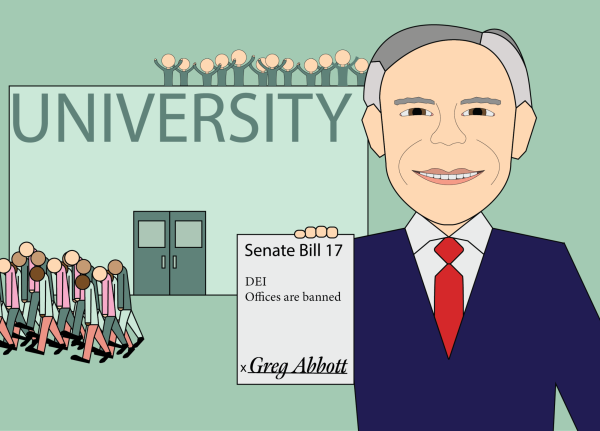The Georgia Senate Runoffs and the Results
The election pitted Democrat Jon Ossoff against Republican David Perdue for one of the seats and Democrat Raphael Warnock against Republican Kelly Loeffler for the other.
January 20, 2021
After the November Presidential election, Democrats and Republicans shifted their focus on the Georgia Senate runoffs since those seats were not resolved in the general election. Democrats have not controlled the Senate since 2008 so they hoped with Georgia turning blue in the presidential election that the two remaining Senate seats would also go in their favor. The election pitted Democrat Jon Ossoff against Republican David Perdue for one of the seats and Democrat Raphael Warnock against Republican Kelly Loeffler for the other.
On Tuesday, Jan. 5, polls closed in Georgia, and late that night the first race was called in favor of Warnock. Wednesday, the world waited anxiously for a winner in the second race. Eventually, Ossoff was pronounced the winner, meaning that the Democrats now barely control the Senate, the House of Representatives, and the Presidency.
“Before the election, I felt okay about the fate of the Senate, and after the election thinking that Ossoff and Warnock had lost. I was not super surprised,” senior Nick Van Lente said. “That being said, after the runoff election, I am happily surprised.”
Since the Democrats have not controlled the Senate in over a decade, getting things passed will become easier for Biden during his Presidency. According to Van Lente, there is a lot Democrats can do for the next at least two years before the midterm elections in 2022.
“Personally, I have my fingers crossed that we can make some constitutional and structural reforms,” Van Lente said. “Such as ending the filibuster, amending or banning the electoral college, and limiting the powers of the executive.”
In many southern states including Texas, the races between Democrats and Republicans are becoming very close and deep red states are starting to come into play including Georgia.
“I’m not surprised in the least that Georgia is going blue,” Van Lente said. “The reality is, states are undergoing demographic changes where the share of white people is decreasing and they are seeing steady shifts to the Democratic Party. Democratic policies and democratic leaders are predominately popular in many communities of color as a result of policy that embraces diversity instead of policy that denigrates diversity and empowers white supremacy.”
In Georgia Warnock gave a speech at midnight claiming his win and Ossoff’s victory was released midday on Wednesday with both Republican candidates conceded soon thereafter according to CNN news.
“I honestly did not think much about the election night,” junior Malaika Beg said. “But I was thinking it could have gone Republican because of how close the numbers were.”
With the runoff results, the Senate is now split fifty-fifty meaning that vice President Kamala Harris will make the tie-breaking vote if needed for any legislation that is split by parties. While unlikely this does give way for moderate Republicans to cross the aisle when voting on legislation.
“Our representative Democracy works best when educated people come together and discuss the real issues in front of us,” Government teacher Dalton Pool said. “Our Republic works best when we work together for the common good.”
In the general election, there was an uptick in young voters and non-white voters. Georgia was no exception with many voters taking advantage of early voting and voting by mail. According to Van Lente, he was not super surprised by the election results given, in his opinion, the demographics of that state are changing.
“In the wake of the Black Lives Matter (BLM) protests, turnout in the general election and in the runoff election have surged in favor of Democrats,” Van Lente said. “This process is also happening in states such as Texas, where the Democratic share of the electorate is growing closer and closer to becoming a blue state.”



















